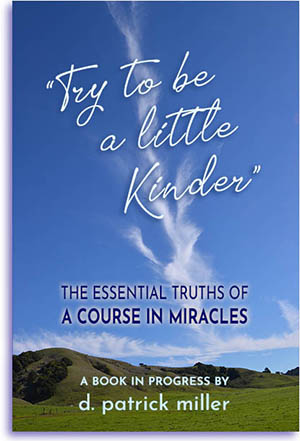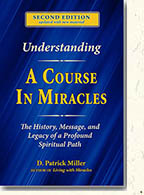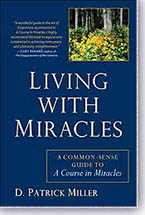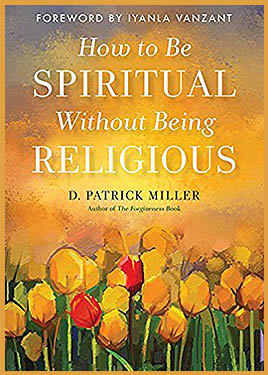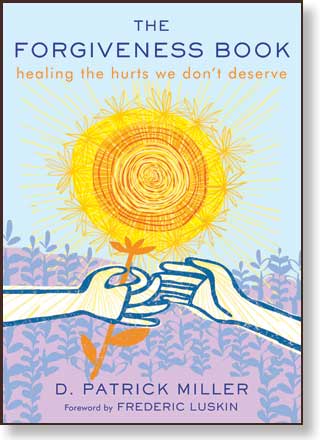Identified by the New York Times in 2019 as an "esoteric bible that has gone mainstream," A Course in Miracles (ACIM) is a major influence on the rapidly growing number of people who think of themselves as "spiritual but not religious." Following is a brief digest of the history and significance of ACIM by a journalist who has followed its story for over 30 years. This article may be excerpted, reposted, or reprinted without permission as long as the authorship is credited and a link to this feature is provided.
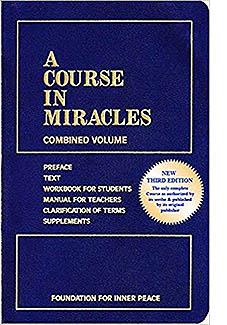 A Course in Miracles is a spiritual discipline that guides students toward a healthier mentality and way of life by restoring their contact with what it calls the Holy Spirit or "internal teacher."
A Course in Miracles is a spiritual discipline that guides students toward a healthier mentality and way of life by restoring their contact with what it calls the Holy Spirit or "internal teacher."
The Course uses both an intellectual and an experiential approach within its 650-page Text (providing the philosophical foundation of the teaching), 500-page Workbook of 365 meditations (prescribing a daily transformative discipline), and 90-page Manual for Teachers (adding a variety of insights useful to advanced practitioners).
First published by the nonprofit Foundation for Inner Peace in 1976, the Course was written down in shorthand from 1965 to 1972 by Dr. Helen Schucman, a research psychologist at Columbia University, and dictated to her supervisor Dr. William Thetford, director of Columbia-Presbyterian Medical Center's Department of Psychology, who typed the manuscript.
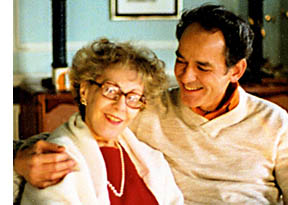 Schucman said she was writing down an "inner dictation" given to her by a mysterious Voice and never claimed authorship of the content, remaining personally ambivalent about its message. Shortly before her death in 1981, she told a friend: "I know the Course is true, I just don't believe it." There is no central organized religion or membership institution built around the Course, and no "guru" widely accepted as an embodiment of the teaching.
Schucman said she was writing down an "inner dictation" given to her by a mysterious Voice and never claimed authorship of the content, remaining personally ambivalent about its message. Shortly before her death in 1981, she told a friend: "I know the Course is true, I just don't believe it." There is no central organized religion or membership institution built around the Course, and no "guru" widely accepted as an embodiment of the teaching.
As a psychological discipline, the Course encourages the transformation of the self through the constant practice of forgiveness. While many other paths and therapies recommend the use and benefits of forgiveness, the Course is unique in its relentless emphasis on forgiveness as a moment-by-moment practice that transforms attitudes, behavior, and relationships.
As a spiritual training, ACIM insists on a complete reversal of ordinary perception, urging acceptance of spirit as the only reality and of the physical world as a mass illusion (similar to the Buddhist and Hindu notions of samsara and maya, two terms designating the everyday world we see as a kind of dream).
Thus, although the Course uses some Christian terminology, its metaphysics is more aligned with Eastern mysticism than traditional Western religion. In fact, Bill Thetford used to refer to it as "the Christian Vedanta." ACIM also directly challenges significant elements of contemporary Christianity, particularly the doctrines of sin and crucifixion.
For instance, it argues that the significance of the Resurrection is not that Jesus Christ died to atone for the sins of humankind but rather that, as an advanced being who was fully cognizant of the illusory nature of the physical world, Jesus neither suffered nor died on the cross. The Course further maintains that everyone shares the potential to achieve such an enlightened consciousness.
The theological challenge of the Course is intensified by the fact that the authorial "Voice" clearly identifies itself as Jesus Christ, bringing a correction of traditional Christianity to the world in modern psychological language. Its corrective tone is clear in such passages as the following:
You will not find peace until you have removed the nails from the hands of God's Son, and taken the last thorn from his forehead. The Love of God surrounds His Son whom the god of crucifixion condemns. Teach not that I died in vain. Teach rather that I did not die by demonstrating that I live in you. For the undoing of the crucifixion of God's Son is the work of the redemption, in which everyone has a part of equal value....
If the Apostles had not felt guilty, they never could have quoted me as saying, "I come not to bring peace but a sword." This is clearly the opposite of everything I taught. Nor could they have described my reactions to Judas as they did, if they had really understood me. I could not have said, "Betrayest thou the Son of Man with a kiss?" unless I believed in betrayal. The whole message of the crucifixion was simply that I did not. ... As you read the teachings of the Apostles, remember that I told them myself that there was much they would understand later, because they were not wholly ready to follow me at the time.
Although the Course does not identify itself as philosophically superior to any other teaching -- stating that it is only one version of a "universal curriculum" -- it does suggest that serious students may progress faster by its use than by any other spiritual method. The Course's alleged authorship and its challenge to Western religious tradition have served to make it popular with people seeking alternative spiritual guidance but troubling to its critics, especially those in conservative Christian circles.
A Perennial Best-Seller
After a few hundred photocopied versions of the Course in manuscript were supplanted by a quality hardcover edition in 1976, the first-year sales were modest, about five thousand copies. In 1977 Psychic magazine editor James Bolen changed his publication's name to New Realities, partly to overcome Helen Schucman's resistance to a story about the Course appearing there. The first issue featured an interview with the original publisher, Judy Skutch, and helped boost second-year sales of the Course to 7,500.
In 1980 a largely hostile story on the Course appeared in Psychology Today but helped sales nonetheless. Skutch told me that's when she realized that "it didn't matter what anybody said about the Course as long as they spelled the name right. People were just drawn to it."
By 1984 sales of the Course were approaching 30,000 copies annually; with the release of the softcover edition in 1985 that figure rose to 60,000 and the Course was on its way to becoming a perennial best-seller. During the mid-to late 1980s the Course and its farflung network of independent study groups began to receive press coverage from major regional newspapers, including the Oregonian, San Francisco Examiner, Dallas Times Herald, Anchorage Daily News, Philadelphia Inquirer, Atlanta Journal, New York Times, Guardian of London, and Record of Perth, Australia.
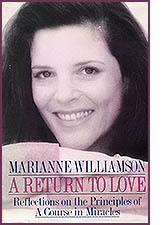 The largest single leap in Course sales occurred after the 1992 publication of Marianne Williamson's first book A Return to Love, when sales rose from 70,000 to 105,000 -- an increase of 50 percent. Thereafter the numbers leveled off to about 85,000 copies annually, prior to release of the Viking edition of the Course in the spring of 1996. After a five-year licensing period, the Foundation decided to take it back and has since turned down at least one other major publisher interested in licensing ACIM. Sales of the Course rose about 5 percent soon after the 2003 publication of Gary Renard's The Disappearance of the Universe (Fearless Books), which brought many new and lapsed students to ACIM. The major New Age publisher Hay House bought the rights to the book in 2005, making it a worldwide bestseller in a number of foreign editions as well as publishing three subsequent titles by Renard. Other prominent spiritual teachers and writers who have used ideas from ACIM while not being primarily identified as Course teachers include Eckhart Tolle, Wayne Dyer, and Gabrielle Bernstein.
The largest single leap in Course sales occurred after the 1992 publication of Marianne Williamson's first book A Return to Love, when sales rose from 70,000 to 105,000 -- an increase of 50 percent. Thereafter the numbers leveled off to about 85,000 copies annually, prior to release of the Viking edition of the Course in the spring of 1996. After a five-year licensing period, the Foundation decided to take it back and has since turned down at least one other major publisher interested in licensing ACIM. Sales of the Course rose about 5 percent soon after the 2003 publication of Gary Renard's The Disappearance of the Universe (Fearless Books), which brought many new and lapsed students to ACIM. The major New Age publisher Hay House bought the rights to the book in 2005, making it a worldwide bestseller in a number of foreign editions as well as publishing three subsequent titles by Renard. Other prominent spiritual teachers and writers who have used ideas from ACIM while not being primarily identified as Course teachers include Eckhart Tolle, Wayne Dyer, and Gabrielle Bernstein.
By 2020, the Foundation's Standard edition of ACIM had sold over three million copies worldwide and was maintaining an annual sales pace of about 40,000, plus 13,000 in Spanish, establishing its historical persistence as an underground best-seller. There are 26 other translations available, these editions being managed by the Foundation for Inner Peace. After a challenge to the copyright resulted in its revocation in 2004, a handful of alternate editions became available, recently including a completely new transcription of Helen Schucman's original notes by noted Course teacher Robert Perry. While these alternate editions each have a following, none of them have approached the perennial popularity of the Standard edition, nor do they significantly alter its message.
|
|---|
A Course in Miracles could fairly be called the Bible of the so-called "spiritual but not religious" (SBNR) movement, a change in social and religous perspective that has slowly grown over the last few decades, particularly in the US and Western Europe. While generally referred to as a "self-study" curriculum, ACIM is in fact so difficult to comprehend and follow as a discipline that most students sooner or later join a study group, or one of the handful of accredited churches inspired by the teaching. Because no one tracks "membership" in this loose affiliation of students, it is impossible to document the number of people influenced to some degree by ACIM, although the number is easily in the millions worldwide.
Its ideas and principles are sometimes spread through misattributions of the source material, such as the quote "Your task is not to seek for love, but merely to seek and find all of the barriers within yourself that you have built against it" being widely attributed on Internet memes to the mystical poet Rumi. While it is impossible to document all of Rumi's writings, the sentence appears word-for-word in Chapter 16 of the Course Text.
A significant number of ACIM students have accepted it as a lifelong discipline, despite the challenges of comprehending it and adhering to the often-demanding discipline of its Workbook of 365 daily lessons. While no particular idea that the Course promotes could be described as completely new, its heady mix of reinterpreted Christian language, modern psychological thought, and Eastern metaphysics makes it a very different kind of spiritual teaching than the world has ever known before.
Although the various meanings of A Course in Miracles may seem obscure and complex at first, its overall message may be much simpler than it first appears. I once asked the late Kenneth Wapnick, PhD., one of ACIM's original editors and still its foremost philosopher, if he could sum up the import of ACIM in just a few words. While I was expecting a demurral, his reply was quick: "Sure, that's easy," he laughed. "The Course is basically saying: Try to be a little kinder."
There could perhaps be no more important and challenging message for our troubled and divisive times.
_________________________
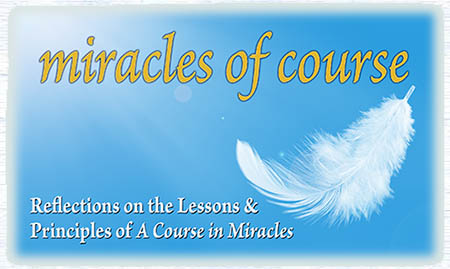
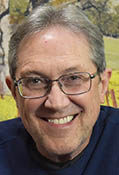 First trained as an investigative journalist, D. PATRICK MILLER began writing about spirituality, human potential, and creativity after a seven-year illness initiated his spiritual path. Since that time he has intensively studied A Course in Miracles, the Enneagram system of personality, Jungian depth psychology, shamanism, and related fields of contemporary spirituality. He has also applied spiritual principles and disciplines intensively in his own life, and written about the results. He is the author of a dozen print titles, four of which appear below, and many more e-books. As a magazine and online journalist, Patrick has written over 100 articles for Yoga Journal, THE SUN, Elephant Journal online, and many other media. He is also the founder of Fearless Books and Literary Services.
He maintains a regular column on this website entitled miracles of course, which offers brief expositions on the principles and applications of various Workbook Lessons.
First trained as an investigative journalist, D. PATRICK MILLER began writing about spirituality, human potential, and creativity after a seven-year illness initiated his spiritual path. Since that time he has intensively studied A Course in Miracles, the Enneagram system of personality, Jungian depth psychology, shamanism, and related fields of contemporary spirituality. He has also applied spiritual principles and disciplines intensively in his own life, and written about the results. He is the author of a dozen print titles, four of which appear below, and many more e-books. As a magazine and online journalist, Patrick has written over 100 articles for Yoga Journal, THE SUN, Elephant Journal online, and many other media. He is also the founder of Fearless Books and Literary Services.
He maintains a regular column on this website entitled miracles of course, which offers brief expositions on the principles and applications of various Workbook Lessons.
This article is excerpted and condensed from the Second Edition of Understanding A Course in Miracles: The History, Message and Legacy of a Profound Spiritual Path, now available in print and digital form worldwide.
You can support the reportage and essays of D. Patrick Miller here:
 HOME • BOOKS • FEATURES • STAY IN TOUCH
HOME • BOOKS • FEATURES • STAY IN TOUCH
